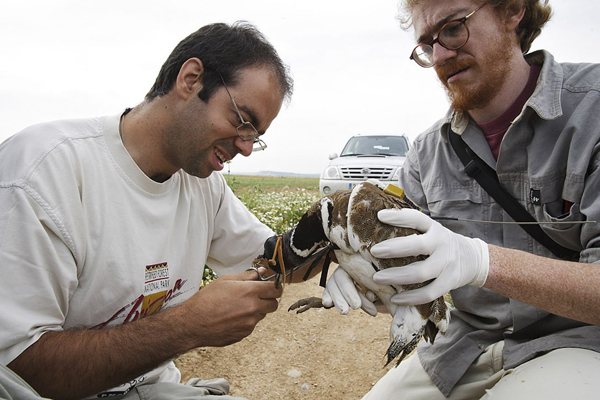National R&D&i Plan
(CGL-2009-13029-BOS). 2010-2013.
The Little bustard (Tetrax tetrax) is a steppe-land bird listed as Vulnerable in Spain, the country that gives refuge to ca. 50% of its total world population (García de la Morena et al., 2006). Basic knowledge of the species’ breeding biology and habitat requirements has increased notably in recent years. Nevertheless, information on the influence of large geographical-scale environmental factors (climate, land-use) that determine the Little bustard distribution, abundance and population trends is still insufficient. At a smaller spatial scale, the role played by population density, coexistence with ecologically close species, predation and certain types of habitat management (e.g. for game hunting) in habitat selection patterns and population dynamics remains unknown.
This project contributed to the knowledge of these aspects within the theoretical and analytical framework of the ecological niche theory, identifying the factors that are relevant at different spatial scales. This should help to improve the design of this threatened species’ conservation strategy at both the national and international levels.
As a result, we were able to:
- Analyse the climatic variables that determine the species’ European distribution in order to describe its potential climate niche.
- Determine the range of variation in climatic and land-use variables, and define the Little bustard niche at a Peninsular scale.
- Model the species’ distribution in Europe and Iberia under different global change scenarios (climate plus land-use).
- Analyse the effect of population density and coexistence with ecologically similar species on the little bustard habitat selection patterns, spatial distribution and breeding success.
- Determine the role of spatial distribution of food and other resources in the Little bustard and coexisting species’ patterns of habitat selection at small spatial scales.
- Assess the effect of game managing on the little bustard distribution and abundance.
- Improve knowledge about female Little bustard breeding biology by:
a. Studying female movements during the pre-laying period.
b. Assessing female breeding success and the factors that determine it (habitat choice, human influence, etc.)
.


